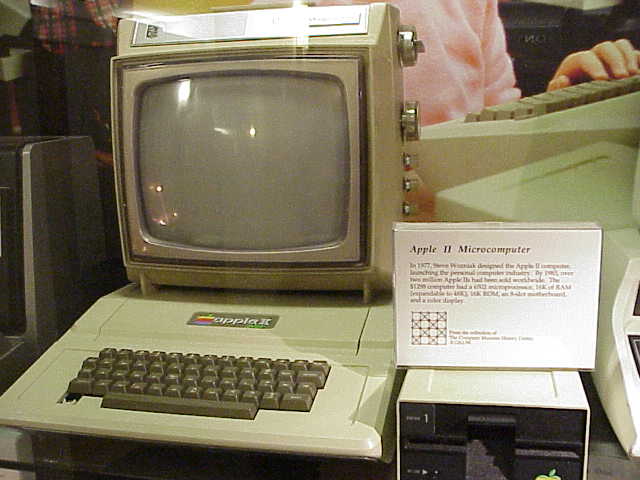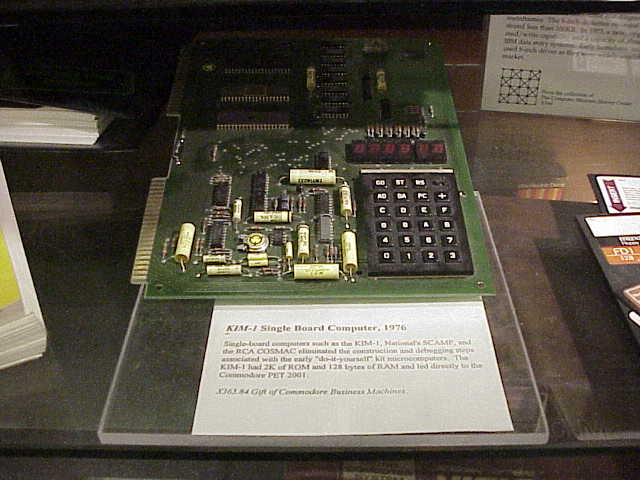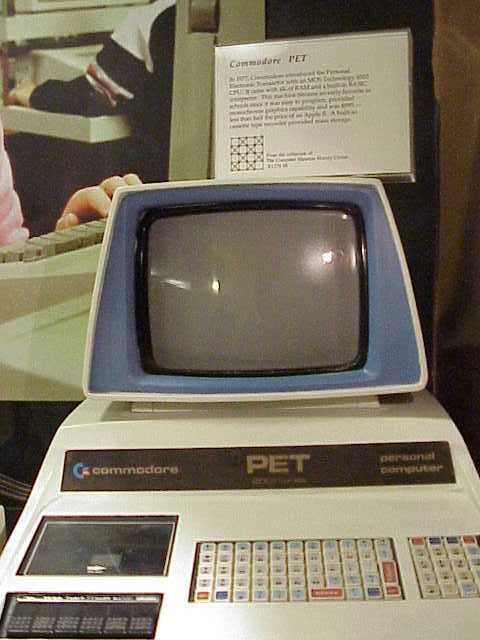Home Computer Display (1970's)
floor4 left
Early Home Computers
Apple II [CMHC] with TV display [Gio] (1977)
TRS-80 (1977) [CMHC]
KIM Single-board Computer [CMHC] (1976)
Commodore PET computer [CMHC]
The Commodore 'PET' Model 4032 had an unusual, non-QWERTY
keyboard layout that you learn to love to hate!
The later Commodore 'PET' Model 8032 has a more standaridized keyboard layout.
The Commodore 'Vic-20' was introduced in June 1980.
later models were the Commodore 64, 128, and Plus/4.
A cassette tapedrive, to the right of the keyboard, was included.
Osborne Portable Computer [Stuart Cheshire]
OSBORNE 1 the first (or trendsetting) example of the "suitcase" computer.
The Osborne 1 computer is Z-80 based, has 64k of memory, two 5 1/4
inch single density floppy drives, a 4 inch (!) internal monitor, one
serial port and a parallel (more or less) printer port, and runs CP/M.
The screen could dispay a line of 40 characters. If there was more on
the line (CP/M allowed 80-characters) the display had to be shifted
right with a cursor key.
The second version of the Osborne 1 had a molded structual plastic
case replacing the original vac-u-formed tan case and was somewhat
less rigid that might have been needed for a "portable" computer.
For those who prefer not to do their computer work in 'eye-test' mode,
there is a provision on the system for connection of an external
monitor.
"The Osborne series of computers was the brainchild of one Adam Osborne
who could probably be credited as the father of the computer gossip
column. Known for being quite vocal and opinionated, he wrote regular
columns for many of the computer publications and became well known
for his pontifications on how the computer industry should develop."
[SC]
Related web sites
James Willigen: The earliest
Micro computers
were for hobbiests only. Later, as seen in
pictures from the
1982 7th and 1983
8th Computer Faires. The Computer Faires, started in 1977 by Jim Warren
(ex Stanford MS student), were the primary public venues for home computing.



 Gries's book MS
Gries's book MS 






